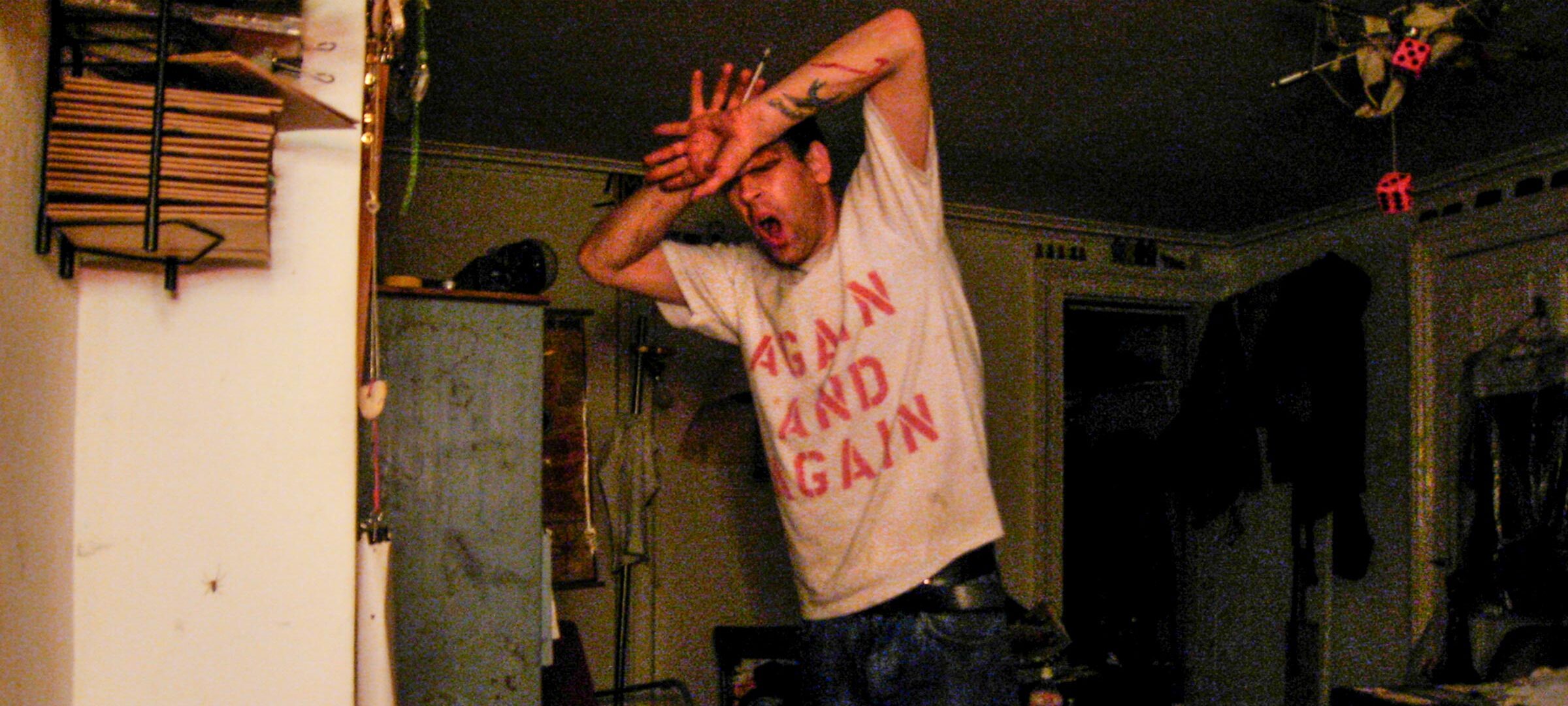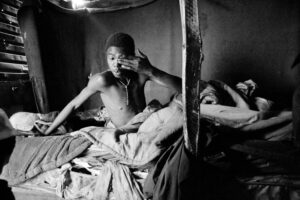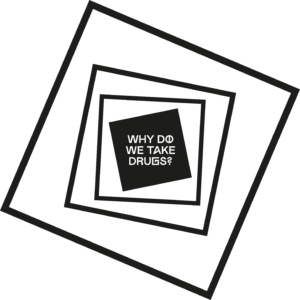
Heroin Falls
23 November - 27 April 2025Our new Universal Ticket allows access to our entire gallery. This ticket operates on a ‘Pay If and What You Can’ basis. Upon arrival, please go to gallery reception where our universal ticket is available. No pre-booking necessary. If you would like to make a Group Booking or have additional access needs, please contact us on scva@uea.ac.uk or 01603 593199
Heroin Falls unflinchingly reveals heroin dependency as seen through the eyes of two remarkable photographers.
The exhibition aims to show how substance use and dependency is a global challenge that transcends race, location and class.
Magnum photographer Lindokuhle Sobekwa (b.1995) aimed his lens at a group of young men living in the South African township of Thokoza, where they turned to using Nyaope, a low-grade form of heroin which can be mixed with many different bulking agents including cannabis products, antiretroviral drugs, as well as other materials.
Sobekwa documented their journey, capturing their daily activities and chores. He concluded the project by presenting a positive, redemptive aspect of their journeys through rehab and moments of reflection.
Sobekwa explains: “My education in photography was not only based in school, where they teach you, but also in the people I photograph. The Nyaope project was really about the fragile family created out of circumstances, rather the biological family with the shack being a home to meet, smoke and have conversations. It was from allowing me as a photographer access to their space to take images and to know when to put the camera down, to talk and to know when to keep quiet.”
While most documentary projects about dependency expose another person’s behaviour, Scottish-born, New York-based photographer Graham MacIndoe (b.1963) took a very different approach: he photographed himself during the years he was dependant on heroin. He’d place a cheap digital camera on a table or bookshelf, set the self-timer to take a photo every so often, then turn his attention to the rituals of his habit. The resulting images unflinchingly depict his drug dependency, along with his creative use of the medium to chart his own recovery.
MacIndoe has been in recovery for nearly 15 years, volunteering to help others access harm reduction, treatment, and recovery support and reduce the stigma surrounding people navigating dependency and other challenges. The exhibition will also include collaborative works from this series.
Describing his process, MacIndoe says: “Even in that haziness of dependency and the surrounding chaos and disruption in my life, I was still thinking like a photographer. I was aware of the environments I was in, the way the light was, what angles to choose, and when to take the pictures. It just seemed very instinctive for me to start recording what I was going through.
“Initially, I had thought I could take pictures of other people taking drugs, but I gradually turned the camera on myself as a way to document dependency from the inside.”
Please note, this exhibition includes strong imagery depicting active use, including needles, smoking, substances and people under the influence of drugs. These images might be difficult to view and distressing and may not be suitable for children. If you prefer not to visit this exhibition, please explore the other exhibitions in our Why Do We Take Drugs? season.
Heroin Falls is part of a six-month season of interlinked exhibitions and events that explore the question Why Do We Take Drugs?

Lindokuhle Sobekwa, Thabang waking up in the early hours of the morning, 2015, from the Nyaope. Copyright: Lindokuhle Sobekwa / Magnum Photos

Graham MacIndoe, My Addiction. Copyright: Graham MacIndoe


